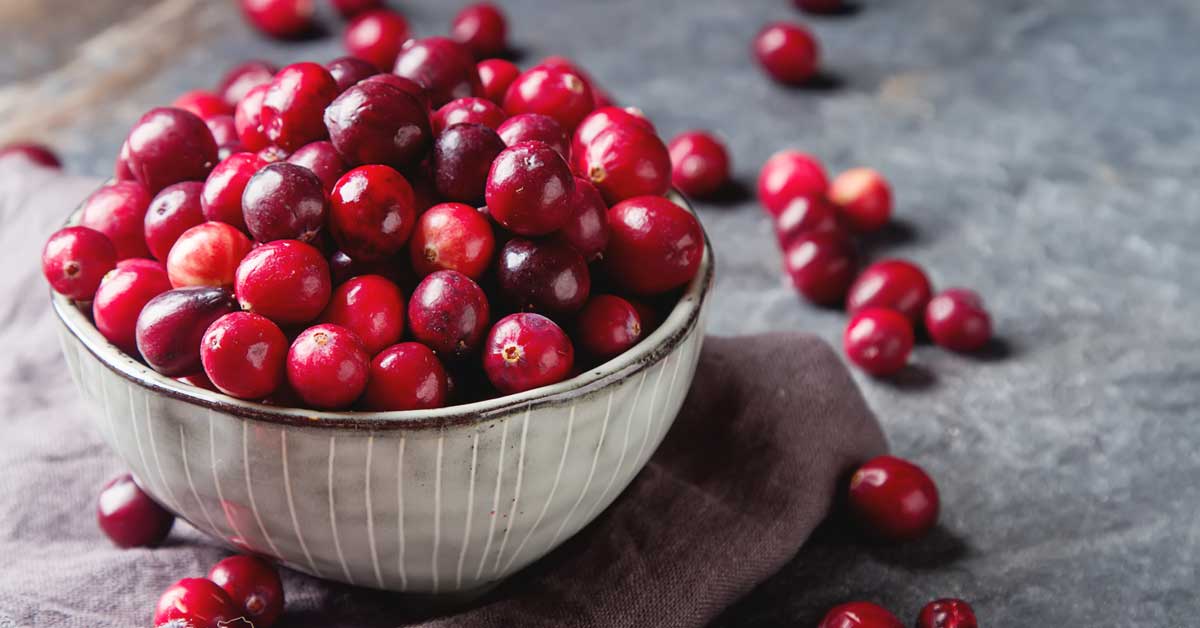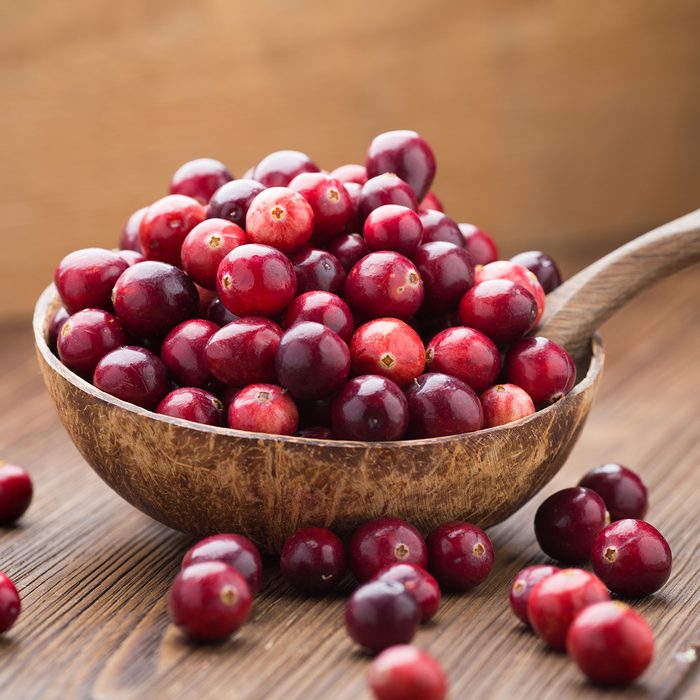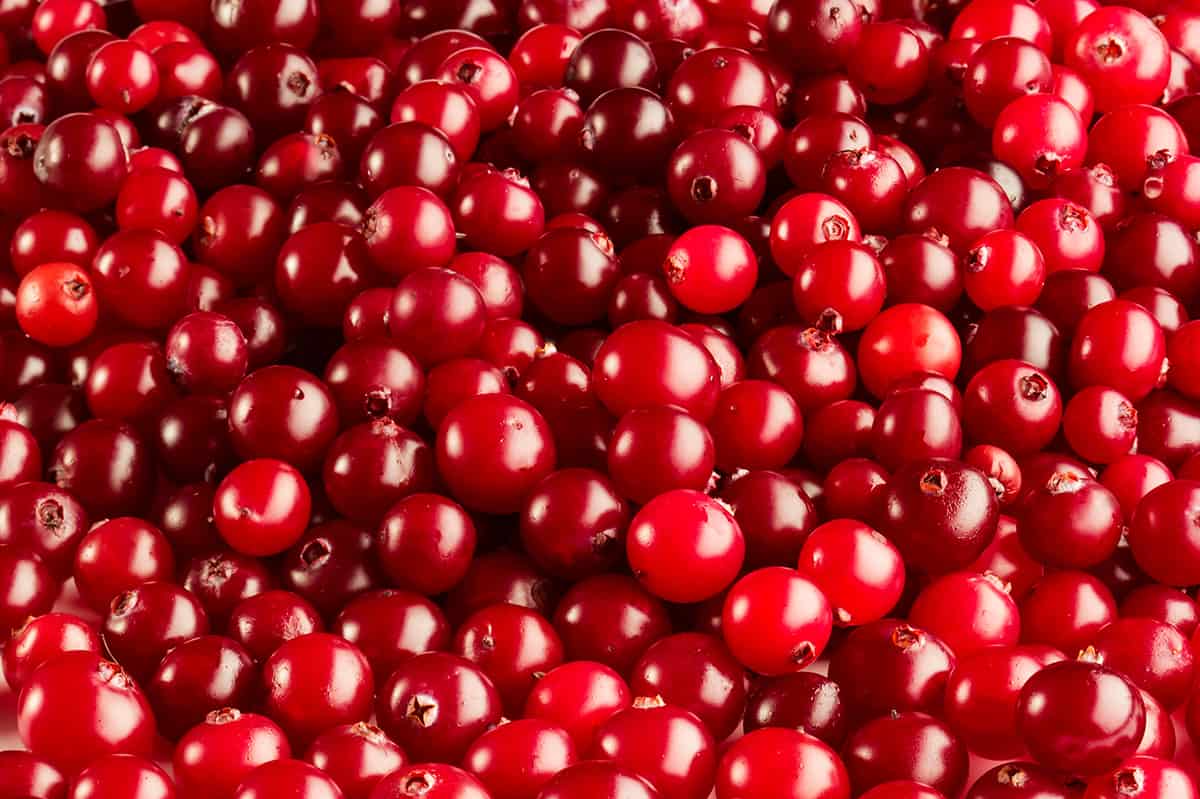Unraveling The Web: The Fascinating World Of Cranberry Field Spiders
When one pictures a vibrant cranberry bog, images of lush red berries, glistening water, and perhaps even the occasional harvester often come to mind. What many don't realize is that these unique agricultural landscapes are also bustling ecosystems, home to an incredible array of life, including a diverse and often overlooked population: the cranberry field spiders. Far from being mere background dwellers, these eight-legged inhabitants play a crucial, often unseen, role in the health and productivity of cranberry farms, contributing significantly to the delicate balance of the bog environment.
The presence of spiders in agricultural settings might initially conjure thoughts of pests, but in reality, they are invaluable allies. In the context of cranberry cultivation, these spiders are not just surviving; they are thriving, adapting to the wet, often disturbed conditions of the bog. Understanding their lives, their ecological contributions, and how they interact with their environment is key to appreciating the complex biodiversity that underpins our food systems. This article delves deep into the world of these remarkable arachnids, exploring their species, behaviors, and the vital functions they perform within the cranberry fields.
Table of Contents
- The Unique Ecosystem of Cranberry Bogs: A Spider's Haven
- Meet the Residents: Common Cranberry Field Spider Species
- The Indispensable Role of Spiders in Cranberry Cultivation
- Life Cycles and Adaptations: How Spiders Thrive in Bogs
- Threats and Conservation: Protecting Our Eight-Legged Allies
- Dispelling Myths: Understanding Spider Behavior in the Fields
- Coexisting with Spiders: Best Practices for Growers and Visitors
- Beyond the Bog: The Broader Ecological Significance of Spiders
The Unique Ecosystem of Cranberry Bogs: A Spider's Haven
Cranberry bogs are highly specialized wetlands, often characterized by acidic soils, a high water table, and specific vegetation adapted to these conditions. While they are primarily known for producing the tart, vibrant berries that find their way into everything from sauces to smoothies, these bogs represent a fascinating micro-ecosystem. The constant presence of water, whether for irrigation or during the iconic wet harvest where cranberries float to the surface, creates a challenging yet unique habitat. For cranberry field spiders, these conditions are not just survivable but are often ideal, providing consistent moisture, abundant prey, and relatively stable temperatures beneath the dense canopy of cranberry vines.
The structure of a cranberry bog, with its dense network of low-lying vines, offers countless nooks and crannies for spiders to build webs, hide, and ambush prey. The water itself, while a barrier for some terrestrial creatures, is often navigated with surprising agility by various spider species, many of which can walk on the surface tension or even survive brief submersions. This adaptability is a testament to the evolutionary resilience of these arachnids, allowing them to carve out a niche in an environment that might seem inhospitable at first glance. The consistent presence of other insects, attracted to the cranberry plants themselves or the surrounding wetland flora, ensures a steady food supply, making the bog a veritable buffet for predatory spiders.
Meet the Residents: Common Cranberry Field Spider Species
The diversity of cranberry field spiders is surprisingly rich, encompassing a wide range of families and genera, each with its own unique characteristics and hunting styles. While it's impossible to list every single species, some groups are particularly prevalent and ecologically significant in these environments. These often include various species of orb-weavers, sheet-web spiders, wolf spiders, jumping spiders, and even some species of crab spiders.
- Orb-Weavers (Araneidae): Known for their classic, intricate spiral webs, these spiders are often seen suspended between cranberry vines or on adjacent vegetation. They are passive hunters, relying on their sticky silk to ensnare flying insects.
- Sheet-Web Spiders (Linyphiidae): These smaller spiders construct flat, sheet-like webs, often with a tangled maze of threads above them. Insects flying into the upper threads fall onto the sheet below, where the spider waits. They are incredibly abundant in many agricultural fields, including cranberry bogs.
- Wolf Spiders (Lycosidae): Unlike web-builders, wolf spiders are active hunters, patrolling the ground among the cranberry vines. They have excellent eyesight and are swift runners, pouncing on unsuspecting prey. Their presence indicates a healthy ground-level insect population.
- Jumping Spiders (Salticidae): Easily identifiable by their large, forward-facing eyes and jerky movements, jumping spiders are visual predators. They stalk their prey and then pounce with remarkable accuracy. They don't build webs for hunting but use silk as a safety line.
- Crab Spiders (Thomisidae): These spiders are masters of camouflage, often blending seamlessly with the cranberry flowers or leaves. They lie in wait, ambushing insects that come too close.
Hunting Strategies and Diets
The array of hunting strategies employed by cranberry field spiders is a testament to their evolutionary success. From the elegant, geometrically precise webs of orb-weavers to the lightning-fast pounces of jumping spiders, each species has perfected its method for capturing prey within the bog's unique confines. Their diets primarily consist of insects found in the cranberry environment, including various flies, moths, beetles, and even small plant-feeding bugs that might otherwise pose a threat to the cranberry plants. This diverse diet highlights their role as generalist predators, contributing to broad insect control rather than targeting a single pest.
For instance, an orb-weaver's web, strategically placed across a common insect flight path, acts as an indiscriminate trap, catching anything from small midges to larger moths. Wolf spiders, on the other hand, are constantly on the move, actively seeking out ground-dwelling insects. This combination of passive and active hunting ensures that a wide spectrum of potential prey is managed, maintaining a natural balance within the cranberry bog ecosystem. The sheer volume of insects consumed by a healthy spider population can be staggering, making them highly efficient biological control agents.
The Indispensable Role of Spiders in Cranberry Cultivation
While often overlooked, the ecological services provided by cranberry field spiders are incredibly valuable, particularly in the context of sustainable agriculture. Their primary contribution lies in their role as natural predators of various insect pests that can damage cranberry crops. By preying on these insects, spiders help to regulate pest populations, reducing the need for chemical interventions and promoting a healthier, more balanced ecosystem within the bog.
Consider the delicate balance of a cranberry bog: the plants are susceptible to various insect herbivores that can chew leaves, bore into stems, or damage berries. If left unchecked, these pests can significantly reduce yields and quality. Spiders act as a natural line of defense, constantly patrolling, weaving, and ambushing, effectively removing a substantial number of these potential threats. This natural pest control is not only environmentally friendly but also economically beneficial for growers, as it can reduce reliance on costly pesticides and minimize the risk of pesticide resistance in pest populations.
Beneficial Pest Control
The impact of spiders as beneficial pest control agents in cranberry fields cannot be overstated. Research in various agricultural systems consistently shows that a healthy spider population correlates with lower pest densities. In cranberry bogs, this means fewer cranberry fruitworms, gypsy moths, or cutworms, which are all known to cause significant damage. Spiders are always "on duty," providing continuous, low-level predation that helps prevent pest outbreaks from spiraling out of control. They target both adult insects and their larval stages, breaking the pest life cycle at multiple points.
Furthermore, spiders are often less susceptible to the effects of some pesticides than the target insect pests, or they can recover more quickly, making them resilient components of an integrated pest management (IPM) strategy. By encouraging spider populations through habitat preservation and judicious pesticide use, cranberry growers can foster a more robust and self-regulating ecosystem. This natural approach aligns perfectly with modern sustainable farming practices, benefiting both the environment and the long-term viability of the cranberry industry.
Life Cycles and Adaptations: How Spiders Thrive in Bogs
The life cycles of cranberry field spiders are as varied as their species, but all are uniquely adapted to the challenges and opportunities presented by the bog environment. Many species have annual life cycles, with eggs laid in the fall, overwintering, and hatching in the spring, allowing the spiderlings to mature during the peak insect activity of summer. Others may have multiple generations within a single year, particularly in warmer climates.
Adaptations to the wet environment are particularly fascinating. Some spiders, like certain wolf spiders, have hydrophobic hairs on their bodies, allowing them to skim across the water's surface without sinking. Others can create silk "diving bells" or use air bubbles trapped by their body hairs to survive temporary submersion during flooding events, such as those associated with cranberry harvesting. Their ability to quickly rebuild webs after disturbances, or to disperse to new areas via "ballooning" (releasing silk threads into the wind to be carried away), further demonstrates their remarkable resilience and adaptability to a dynamic environment like a cranberry bog.
Reproduction and Dispersal
Reproduction among cranberry field spiders typically involves intricate courtship rituals to avoid being mistaken for prey. After mating, female spiders lay eggs, often numbering in the dozens to hundreds, encased in a protective silk egg sac. These sacs are strategically placed in sheltered locations within the bog, such as under leaves, within dense vegetation, or even buried in the soil, to protect them from predators and environmental extremes. The survival of these egg sacs is crucial for the continuation of the spider population within the bog.
Dispersal is another critical aspect of spider life cycles, especially in an agricultural setting where habitats can be disturbed. Many young spiders, particularly the smaller species, employ a technique called "ballooning." They climb to a high point, release a strand of silk into the air, and are then carried by the wind to new locations. This allows them to colonize new areas within the bog, escape overcrowded patches, or recolonize areas after disturbances like harvesting. This widespread dispersal ensures that spider populations can quickly rebound and maintain their presence throughout the cranberry fields, continuing their vital ecological roles.
Threats and Conservation: Protecting Our Eight-Legged Allies
Despite their resilience, cranberry field spiders face several threats, primarily stemming from human agricultural practices. While cranberry cultivation is often seen as a relatively low-impact form of agriculture, certain aspects can negatively affect spider populations. Understanding these threats is the first step towards implementing conservation strategies that benefit both the spiders and the cranberry industry.
The most significant threats include:
- Pesticide Use: Even targeted pesticides can have non-target effects, harming beneficial spiders alongside pest insects.
- Habitat Disturbance: Tilling, mowing, and even the mechanical harvesting process can destroy webs, egg sacs, and directly harm spiders.
- Habitat Homogenization: Overly uniform agricultural landscapes, lacking diverse vegetation, can reduce the availability of suitable microhabitats for a wide range of spider species.
- Climate Change: Changes in temperature and precipitation patterns can affect spider life cycles, prey availability, and overall bog health.
Conservation efforts for these spiders are often integrated into broader sustainable farming practices. By promoting biodiversity, minimizing chemical inputs, and understanding the ecological role of non-pest insects and arachnids, growers can create a more resilient and self-sustaining cranberry ecosystem.
Pesticides and Their Impact
The use of pesticides in cranberry cultivation, while sometimes necessary for managing severe pest outbreaks, poses a significant threat to cranberry field spiders. Broad-spectrum insecticides, in particular, can decimate spider populations, removing a crucial component of natural pest control. Even selective pesticides can have indirect effects, such as reducing the spiders' food source (the pest insects themselves), leading to starvation or emigration.
To mitigate this impact, integrated pest management (IPM) strategies are crucial. IPM emphasizes a holistic approach to pest control, prioritizing non-chemical methods such as biological control (like encouraging spiders), cultural practices, and monitoring. When pesticides are absolutely necessary, IPM advocates for the use of selective products that have minimal impact on beneficial insects and spiders, applying them at appropriate times and dosages. By adopting these practices, growers can protect their spider allies, ensuring they continue to provide their invaluable pest control services for the cranberry crop.
Dispelling Myths: Understanding Spider Behavior in the Fields
Spiders often get a bad rap, frequently associated with fear and danger. However, most cranberry field spiders are harmless to humans and are far more interested in catching insects than interacting with people. It's important to dispel common myths to foster a greater appreciation for these beneficial creatures.
- Myth: All spiders are dangerous. Fact: The vast majority of spider species worldwide are not venomous to humans, and even those that are typically only bite defensively when threatened. The likelihood of encountering a medically significant spider in a cranberry bog, and then being bitten, is extremely low.
- Myth: Spiders are aggressive. Fact: Spiders are generally shy and reclusive. They prefer to avoid confrontation and will typically flee rather than attack. Bites usually occur when a spider feels trapped or is accidentally pressed against skin.
- Myth: Spiders are pests. Fact: In agricultural settings, spiders are overwhelmingly beneficial. They consume vast quantities of insect pests, providing a free and effective form of biological control.
- Myth: Spiders are attracted to humans. Fact: Spiders are attracted to insects, their food source. They are not interested in humans, and their presence in fields is solely driven by the availability of prey and suitable habitat.
Understanding these facts helps to reframe the perception of spiders from fearful creatures to vital components of a healthy ecosystem, especially in places like cranberry fields where their presence directly contributes to agricultural success.
Coexisting with Spiders: Best Practices for Growers and Visitors
For both cranberry growers and visitors to the fields, fostering an environment where cranberry field spiders can thrive is a win-win situation. Growers benefit from natural pest control, while visitors can appreciate the biodiversity of these unique agricultural landscapes. Here are some best practices for coexistence:
- For Growers:
- Embrace IPM: Implement Integrated Pest Management strategies that prioritize biological control and minimize broad-spectrum pesticide use.
- Habitat Diversity: Maintain diverse vegetation around the bog edges and in non-cropped areas to provide refuge and overwintering sites for spiders.
- Monitor Spider Populations: Regularly assess the health and diversity of spider populations to understand their contribution to pest management.
- Educate Workers: Train farm workers on the importance of spiders and how to minimize harm during routine operations.
- Consider Organic Practices: Organic cranberry farming inherently supports higher biodiversity, including spider populations, due to the absence of synthetic pesticides.
- For Visitors/Public:
- Observe from a Distance: Appreciate spiders from afar; do not disturb their webs or attempt to handle them.
- Learn and Educate: Share knowledge about the beneficial roles of spiders to help dispel myths and reduce unwarranted fear.
- Support Sustainable Farms: Choose cranberries from farms that employ sustainable and environmentally friendly practices, which often include supporting beneficial insect and spider populations.
- Respect the Environment: If visiting a bog, stay on designated paths and avoid trampling vegetation, which can destroy spider habitats.
By adopting these practices, we can ensure that these fascinating arachnids continue to play their crucial role in the cranberry ecosystem, contributing to healthy crops and a thriving natural environment.
Beyond the Bog: The Broader Ecological Significance of Spiders
While this article has focused specifically on cranberry field spiders, their ecological significance extends far beyond the confines of a single agricultural field. Spiders are ubiquitous predators in almost every terrestrial ecosystem on Earth, from deserts to rainforests, and their collective impact on insect populations is immense. They are a cornerstone of food webs, linking herbivorous insects to higher trophic levels, including birds, small mammals, and other invertebrates. Without spiders, many insect populations would explode, leading to widespread ecological imbalances and significant damage to both natural and agricultural systems.
Their role as bioindicators is also important; a healthy and diverse spider population often signifies a healthy ecosystem. Their sensitivity to environmental changes, particularly pesticide exposure, makes them valuable indicators of environmental quality. Protecting spiders, therefore, is not just about preserving a single group of animals; it's about safeguarding the intricate web of life that sustains our planet and our food supply. The humble cranberry bog, with its hidden world of eight-legged hunters, serves as a powerful reminder of the vital, often unseen, connections that bind nature together.
Conclusion
From the dense canopy of vines to the water-logged soil, cranberry bogs are vibrant ecosystems where cranberry field spiders play an indispensable role. These fascinating arachnids, with their diverse hunting strategies and remarkable adaptations, are far more than just inhabitants; they are active contributors to the health and productivity of cranberry farms. By providing natural pest control, they reduce the reliance on chemical interventions, fostering a more sustainable and environmentally friendly approach to agriculture.
Understanding and appreciating these often-misunderstood creatures is crucial for both growers and the general public. As we enjoy our cranberry sauce swirled into yogurt or a refreshing glass of cranberry juice, let us remember the intricate ecological dance happening in the fields where these berries grow, a dance in which spiders are vital performers. We encourage you to learn more about the incredible biodiversity around you and consider how your choices can support these beneficial creatures. Share this article to help spread awareness about the unsung heroes of the cranberry fields, and explore other articles on our site to delve deeper into the wonders of nature's intricate balance.

Cranberries 101: Nutrition Facts and Health Benefits

9 Cranberry Benefits for Your Health + Wellness | Taste of Home

All About Cranberries - How to Pick, Prepare & Store | Healthy Family